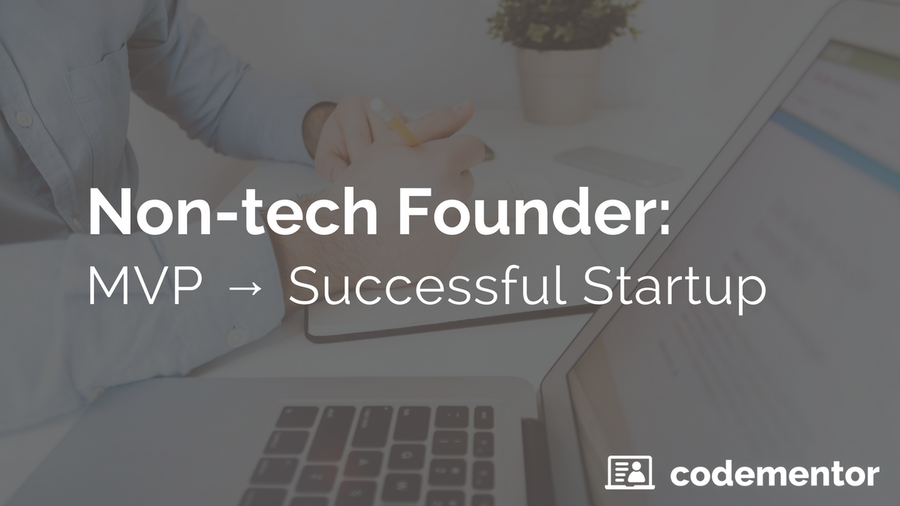We recently hosted Brandon Foo, product designer, engineer, CEO & Co-founder of Polymail, in a live Q&A. Brandon shared Polymail's journey and his thoughts on how to build your startup from 0 to 1!

What is Polymail?
Like so many of us, Brandon and his co-founders couldn’t find a robust solution that addressed all their emailing needs from messages, contacts, relationships, to files. They had to install Gmail plugins and hacky extensions to get the functionalities they wanted. Even after all this work, none of these features and extensions transferred onto their mobile devices. That’s when Brandon and his co-founders decided to build their own cohesive unified email platform that businesses could rely on. And so, Polymail was born!
Early Product Development
Building Your Prototype and MVP
The first step is to validate your concept by building a prototype and MVP. But what if you’re not a developer? Should you outsource your MVP? Brandon believes it’s important to build and manage the product yourself in the early stages. By working on it yourself, you’ll gain a better understanding of your product. It’s also actually a fairly difficult task to find the right freelancer or dev agency when your vision is unclear with many unknown variables. It may be better to build your own MVP and iterate along the way.
What About Polymail?
Polymail’s prototype was built from scratch in two to three months by their founding team. Their goal was to deliver a great product experience people would be passionate about and to see if their concept resonated with the market. Brandon and his team created a product roadmap for every feature and iterated along the way based on user feedback. This means the first version of Polymail only provided enough features to gather user feedback. In terms of what to include in their early releases, Brandon said it all came from their intuition. What’s most important is keeping an open two-way dialogue with users to increase transparency and understand what your users really need and want.
Listening to Your Users
Often, founders who have a great idea but no clear vision want to add a ton of features on their first release, which results in the MVP taking ages to build. This is actually not recommended. It’s common advice to launch as early as possible. For an early stage of your startup, getting user feedback is key to improving your understanding of the product. You’ll then be able to tweak your features to resonate with the public.

There are plenty of online tools that can help with this. For tools to track user analytics, Polymail tried both Mixpanel and Intercom. These tools were deployed to target users who are trying out specific features and to get feedback from them individually, providing both qualitative and quantitative approaches to gathering user feedback. Intercom is also great when it comes to segmenting communication effectively. The only downside is its price. But don’t worry if you’re running on a tight budget. There are a few free tools that are useful too.
When it comes to organizing tasks and increasing transparency and productivity among the team, Asana can do the job. Analytics-wise, Fabric, a free analytics tools owned by Google provides real-time analytics to better understand user performance. But before you plunge into user analysis, be sure to leave time for the development process. Always keep in mind that deploying features, shipping quickly, and getting feedback should always be at top of the list. So try to refine your product to its simplest form while still conveying your core product value and get your product out there!
Customer development is an ongoing process that will last throughout your entire product cycle. While you are developing and iterating your product, try to maintain connections with users. Get out there, and talk to them personally. This helps to validate whether your perspective is aligned with the market. And through this process, you might find more insights or better ideas to implement! When you ask for feedback, try not to ask whether the user likes your product — a common fallacy. Instead, ask about their current workflow and the problems they faced when using your product.
Next Steps

For your company to grow and scale, you need to hit product/market fit. Brandon realized Polymail had hit product/market fit when it was launched on Product Hunt as a private alpha and got the third most upvoted product of all time. With thousands of people requesting invites to join the alpha, it proved to them that there’s a need in the market. To build up a user base and really meet the market’s needs, Polymail spent nine months in a private beta stage and not until recently, had their paid pro version released three months ago. To continually scale and iterate their product, Polymail has an internal system to prioritize feedback, requests, and suggestions, which helps the team make data-driven decisions.
Building Your Founding Team
Building a startup is a full-time job that requires your full attention. There are many things such as market validation, building your prototype/MVP, and customer development that are very time-consuming. Working full-time on your product will definitely speed up the process. For Polymail, they started with three engineer co-founders and built their entire MVP by themselves. Brandon himself worked on the design and front-end development while the other two co-founders worked on front-end and back-end development plus architecture. It is important to split up the work and use your skillset to the fullest. Even if your founding team doesn’t include engineers, it’s totally fine. It might be surprising that none of the founders of Polymail studied computer science. They mostly self-taught by working on projects and gained experience along the way. It helped them to be lean and gain more control over their product.
If you find it difficult to build your MVP all alone, platforms such as CodementorX can help you search for suitable freelance developers.
Marketing Strategy
SEO is an useful way to increase product visibility, but is it really necessary to focus on this at your product’s stage? When your product is still in early stages, Brandon recommends finding an online community such as Product Hunt to spread the word. Start by building a product that resonates with the market, and from there, people will start sharing and writing blog posts organically about your amazing product.
What about PR? In terms of Polymail, Y Combinator prepared their press launch and posted it on the YC blog, which then got covered by VentureBeats, Next Web, etc. The rest of the work comes from networking. Through different events, Brandon and his team developed relationships with reporters and now contacts them directly when Polymail releases new features.
Funding Tips

Running a startup is time and money consuming. Many founders turn to accelerators and VCs for fundings. So when did Polymail start raising funding? At their MVP stage, all their initial funding came from family and friends. It wasn’t until after they launched on Product Hunt that they started searching for angel investors. After a few months, on their second attempt, Polymail was selected to join the summer 2016 batch at Y Combinator. Brandon believes it’s important to have a strategic plan and understand your goals. You need to able to explain your product concept clearly, so it’s easy to imagine your startup turning into a big deal. A tip for this is to draw parallels to successful, similar companies.
Another tip is to present your traction by sizing up the market and showing your product demand in the market. Ideally, each round of funds will last 12 to 18 months because fundraising process itself takes anywhere from 2 to 4 months. It’s also a distracting process that takes away a lot of your team’s resources. Identify the milestones you want to achieve and how much capital you need to reach those milestones. You should also identify the stage your product is in, and choose the right investors. Target investors who are most aligned with your product, so they understand your product and where you’re coming from.
Accelerator programs such as YC, 500 Startups, Techstars, and others are great because it forces you to think about how your business looks to investors. Because Polymail is based in LA, Brandon and his team thought it was a great opportunity to move to the Bay area for three months to plug into the YC network and get access to mentors, founders, and other investors. For tips and guidelines, a free and easy way is to read blogs from Y Combinator, Paul Graham, or other accelerators. These are all open source and are extremely helpful for guiding your decision making processes.
Being able to raise just enough capital at first to get yourself going and get your product to market, and then starting to get initial traction first before you go out and think about any subsequent fundraising is a good idea.
— Brandon Foo, CEO & Co-founder of Polymail
It's distracting when you have to focus on both your product development and prepare for funding applications. Don’t rush into fundraising when you don’t need to.
Looking Back and Into The Future of Polymail
Polymail didn’t have an entirely smooth journey. Looking back to its early stages, the biggest challenge Brandon and his team faced was reconciling the idea of shipping quickly with building a stable infrastructure and maintaining performance. A piece of advice for startup founders is to not overlook test-driven development. It definitely saves more time when you build a robust testing framework at the beginning of the process. You can then develop faster with greater confidence and be able to add features without having to conduct manually tests.
Looking forward, Polymail wants to provide users with a collaborative experience to share data, analytics, and communication among team members. Brandon also hopes to increase transparency of email platforms and tie in data from other products to further increase email efficiency.
Recap
Building up a successful startup is not easy. It requires a lot of hard work and iteration. With a great idea, determination, user feedback, and constant iteration, you’ll be on the right track to becoming the next successful startup!
Hopefully you’ve gained some insights from Brandon’s experiences. We'd love to hear your thoughts in the comments below!



